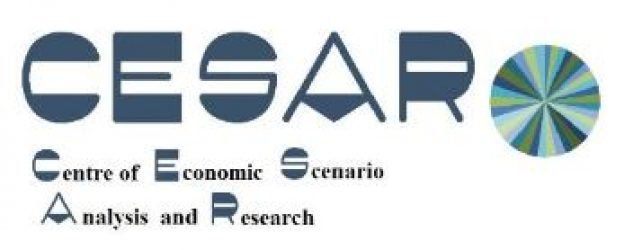LOCOMOTION (Low carbon society: An enhanced modelling tool for the transition to sustainability)
LOCOMOTION is a new research and innovation project funded under the EU’s Horizon 2020 Programme that focuses on the further development of the MEDEAS Integrated Energy-Economy-Environment-Society Assessment Model (IAM). MEDEAS successfully addresses a number of known shortcomings of other IAMs such as the lack of proper consideration of biophysical constraints to energy availability or the consistent integration of climate change damages in impact assessments. In LOCOMOTION, the scope of the model will be expanded by adding new dimensions and improving existing ones (economy and finance, energy technologies, factors of human wellbeing, mineral and land availability, environmental factors, etc.). New methodologies (dynamic econometric multi-regional input-output analysis, micro-simulation and System Dynamics) will be applied and well-developed functionalities
from other models integrated. Modelling results will be available to scientist as open software, including extensive technical documentation. Policy-makers and civil society will have a reliable and user-friendly scenario tool in hand, which allows them to assess the impacts of different policy scenarios on the sustainable transition to a low-carbon society.
https://www.locomotion-h2020.eu/
MIO-ES: A macroeconomic input-output model with integrated energy system and links to bottom-up models
CESAR engages in building a macroeconomic input-output model with an integrated energy system (MIO-ES) for Austria in close cooperation with the Austrian Federal Environmental Agency (UBA). The focus of MIO-ES is the integration of the energy balance flows as well as of established bottom-up datasets and results of partial energy models for transport (NEMO), heat and electricity generation (TIMES) and buildings into the model (moneatry/physical flows link).
The MIO-ES model has an input-output (IO) core and is a fully fledged model in macroeconomic terms. Income distribution and consumption of housholds is modelled at the level of ten income groups (deciles). Energy consumption of households is determined in the bottom-up models and is incorporated into MIO-ES via well defined links between monetary and physical flows at the disaggregate level. MIO-ES also comprises modules for the labour martket and for the public sector that can be used to close the model.
The potential for application of MIO-ES covers all market based instruments (CO2 prices and taxes, subsidies and tax incentives), as well as detailed bottom-up measures ofg decarbonization and energy efficiency enhancement (e-mobility, modal split, building renovation rates, etc.) in the transport, heating and electricity generation sector.
Impact of recent energy policy initiatives (100% renewable electricity, e-mobility) on electricity sector investment needs and their macroeconomic impact
Investment in grid infrastructure and electricity generation capacities is the fundamental requirement for realizing a scenario of 100% renewable electricity until 2030 in Austria. Such a scenario foresees an increase in electricity generation from hydropower, PV and wind energy of 29 TWh until 2030. In order to implement this increase of renewable generation, investment of about 28 bill € in generation capacity is needed. In order to efficiently integrate this renewable increase in the Austrian electricity sytsem, investment of about 4,4 bill € in the grid would be needed. Further grid investment needs are triggered by the increasing use of e-mobility and heat pumps.
The study quantifies the macroeconomic and sectoral impacts of the full (cumulated) investment package of 46 bill €. The grid investment is financed via higher grid tarifs for all electricity users. That leads to an additional increase in the consumer price of electricity of about 0,3% p. a. Besides the positive economic impacts, the investment significantly decreases the CO2 emissions linked to electricity and heat generation.
Climate policy and energy transition for heating in a regional economic perspective
A modelling exercise reveals the regional economic impact of ambitious climate policy objectives for heating for three Austrian NUTS 2-regions: Niederösterreich, Salzburg and Tirol. For the purpose of the study, regional input-output (IO) models for the three regions have been constructed, applying the CHARM method to officially available regional data. The resulting IO models have been enlarged to Social Accounting Matrix (SAM) multiplier models by endogenizing private consumption via income distribution to households and the finacial flows between the household and the public sector.
The policy measures comprise: (i) reduction by 50% of oil-based heating systems until 2030, (ii) reduction by 33% of gas-based heating systems until 2030, and (iii) icrease of the renovation rate of dwellings to 2% p.a. The fossil-based heating systems are to be replaced by a mix of biofuels, heat pumps, and district heating.
Investment of about 1,7 bill € induces an extra value added of 470 mill € with 230 mill € in Niederösterreich, 140 mill € in Salzburg, and 100 mill € in Tirol. Employment effects are significant as well: 4,600 jobs in Niederösterreich, 2,150 in Salzburg, and 1,800 in Tirol. The most benefitted industries are construction, wood products, machinery, metal construction and non-metallic minerals (stone and glass).Energy consumption of households in these Bundesländer is reduced is significantly reduced, by about 20%. The CO2 emission reduction amounts to 1.3 mill tons.
Socio-Economic Impact Modelling in the West-Midlands (SEIM-UK): An interregional input-output approach
The main objective of the project is the construction of an impact assessment model, based on a multi-regional input-output (IO) framework for the UK. The multi-regional model will cover 37 regions of the UK and it will include foreign trade flows with other countries, depending on the available information. Disaggregation of results of impact analysis below the level of West-Midlands will also be considered.
For model building, the focus will be on three different features: (i) globalisation, technological change, and structural change in the labour market; (ii) household heterogeneity and socio-demographic change; and (iii) change in trade patterns and value added chains.
Collaboration and provision of professional services for Tecnalia Research and Innovation (Bilbao) in the framework of the MySmartLife project
In this project CESAR engages in setting up regional IO models and regional SAM multiplier models at the city level. For this purpose, all available datasets from EUROSTAT, WIOD and others ources have been combined, applying the CHARM method. Examples of cities for which the methodology has been applied cover Hamburg, Nantes, Rijeka, Bydgosz, and others. The SAM multiplier models cover indirect (IO multiplier), induced (SAM multiplier with endogenous consumption) and net effects (SAM multiplier with budget neutral financing) of shocks and policy measures.
Tecnalia uses the resulting models for simulating the socio-economic impacts of plausible pathways for the decarbonisation of the energy systems by energy planning of cities.
SHAIO2019_CityBilbao.pptx

